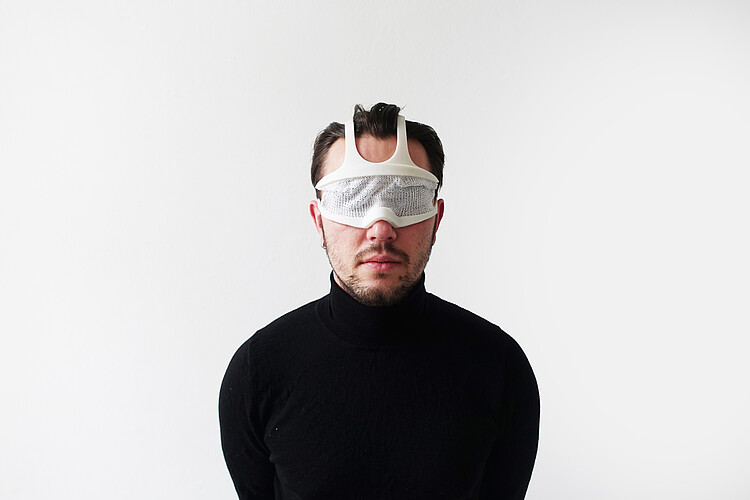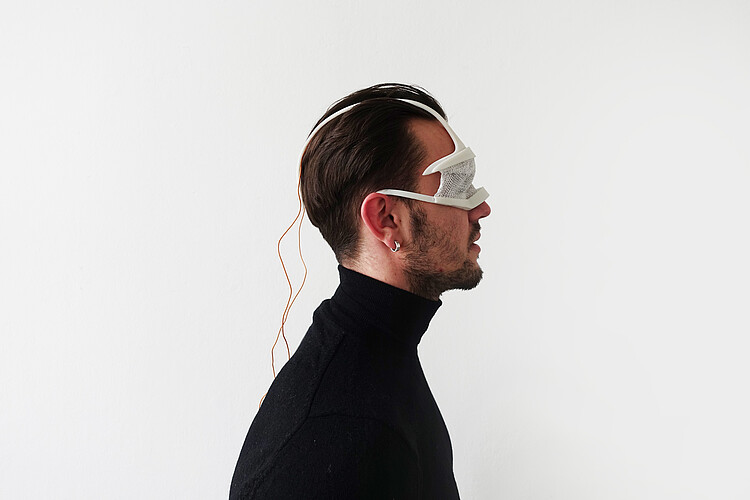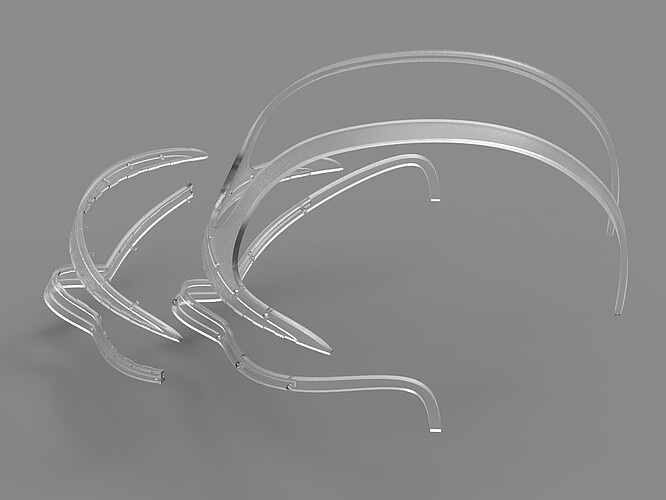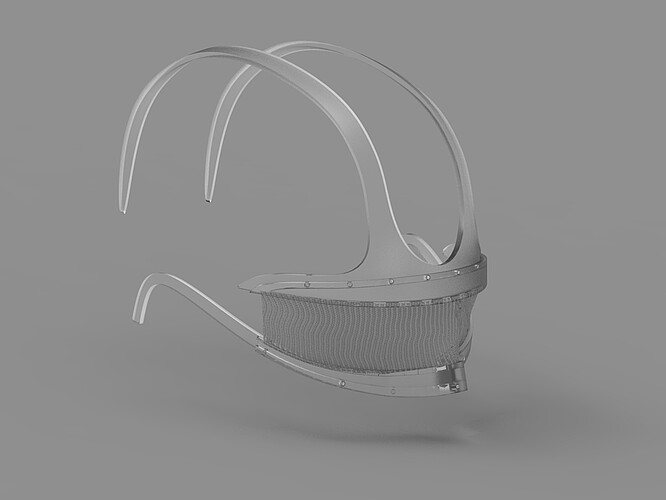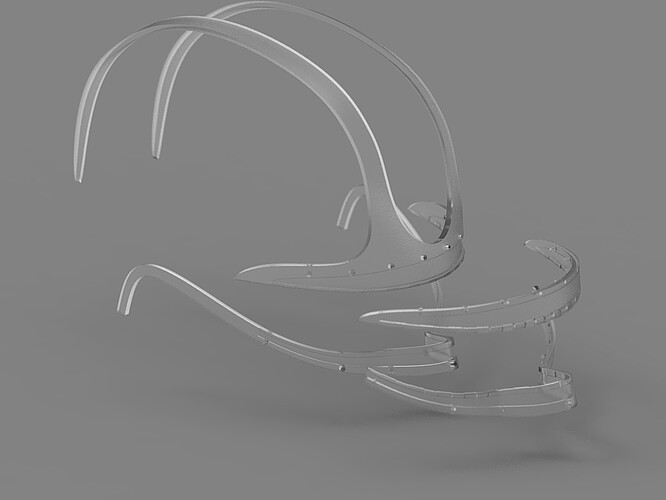Clemens/Jin
Clemens/Jin
Our journey began with reflecting on the application of sensors with smart textiles. We noticed that conventionally these sensors are more applicable for the body, but we were curious of their potential for capturing the micro-movements on the face, especially around the eyes.
CONCEPT
Diving deeper into the realm of “the face”, we started to consider how the technology for face recognition is so omnipresent in our everyday life, that we are so used to unlocking our phone with our face, using instagram filters, getting a face scan when we are passing the custom of a foreign country. This technology usually ties in with the concept of surveillance, a subtle intrusive act. For our final piece we want to replicate this experience. Initially we planned on making two eyewears: one focusing on the sound, the other one focusing on the place. Eyewear A would be a device that allows you to eavesdrop a random everyday conversation. Whenever you are raising your eyebrow, you would be able to hear the conversation clearly, otherwise you could only get unintelligible noises. As you invade someone else’s privacy, your act of intrusion is blatantly exposed by your exaggerated expression. Eyewear B allows you to zoom in to the location of where the conversation is happening from a bird’s eye view. Every time you blink, you approach the designated location a bit further. Due to time constraint, only Eyewear A is realized at the moment.
SENSORS
Our early experiments were mainly fixing pressure sensitive yarns and piezo resistive fabric on eyelids, eyebrows, around the mouth and the jaws. During this stage we learnt that in order to capture the intricacy of facial muscles and skin movement, reliable fixture of the sensors is crucial, otherwise the sensors cannot get authentic and useful inputs. We also found that there are two sensors that work the best with the movements around the eye area: a plain knit sensor with pressure sensitive yarn for eyebrow movements, and a folding piezo resistive fabric sensor for blinking.
MAX PATCH
The Max patch we used was based on the gimlet machine learning patch. We only had a minor adjustment with the length of the audio file in order to fit a continuous conversation. FORM We had two strategies for the form of the final device: a mask that is cut out across the eye area, and a conventional glass frame structure. The upper part of the mask would be fixed on top of the forehead with either double sided tape or semi-wet silicone, the bottom part of the mask would be fixed by a rubber band going around the back of the head, while the two parts are sewn together with pressure sensitive yarn. So whenever the eyebrows are lifted, the pressure sensitive yarn would have a different reading of the electric resistance because of the increasing distance. As for the frame, in the beginning we thought of using conductive aluminum wire, and the knitted sensor would be sewn on the frame, and the folding piezo resistive sensor would be glued or taped on the frame. We landed on the glass frame structure because of aesthetic concern, as we were also bringing in inspiration from the Oakley OVERTHETOP sports sunglasses.
SOUND
Ideally the sound would be conversations recorded on the streets. But for the time being we sourced our sounds from the internet.
EXECUTION
When we were making the final prototype, we decided to replace the aluminum wire with a completely 3D printed frame. Because when the conductive aluminum wire is in contact with the skin, it causes pain. Additionally, 3D printing allow us to have more creative freedom with the form, while we could have a cleaner joint between the fabric and the frame(the fabric is essentially clamped between two layers of 3D printed structure with a clipping mechanism). An accurate measuring of the head is required for a tight fitting without any glue or tape. Therefore we had two iterations before we reached the final prototype that fits perfectly on the head. After the frame is 3D printed, we made a piece of knitted sensor that could compensate all ranges of movements and is tailored to fit the frame.
Team: Clemens Kramer, Jing Jin
xxxx
